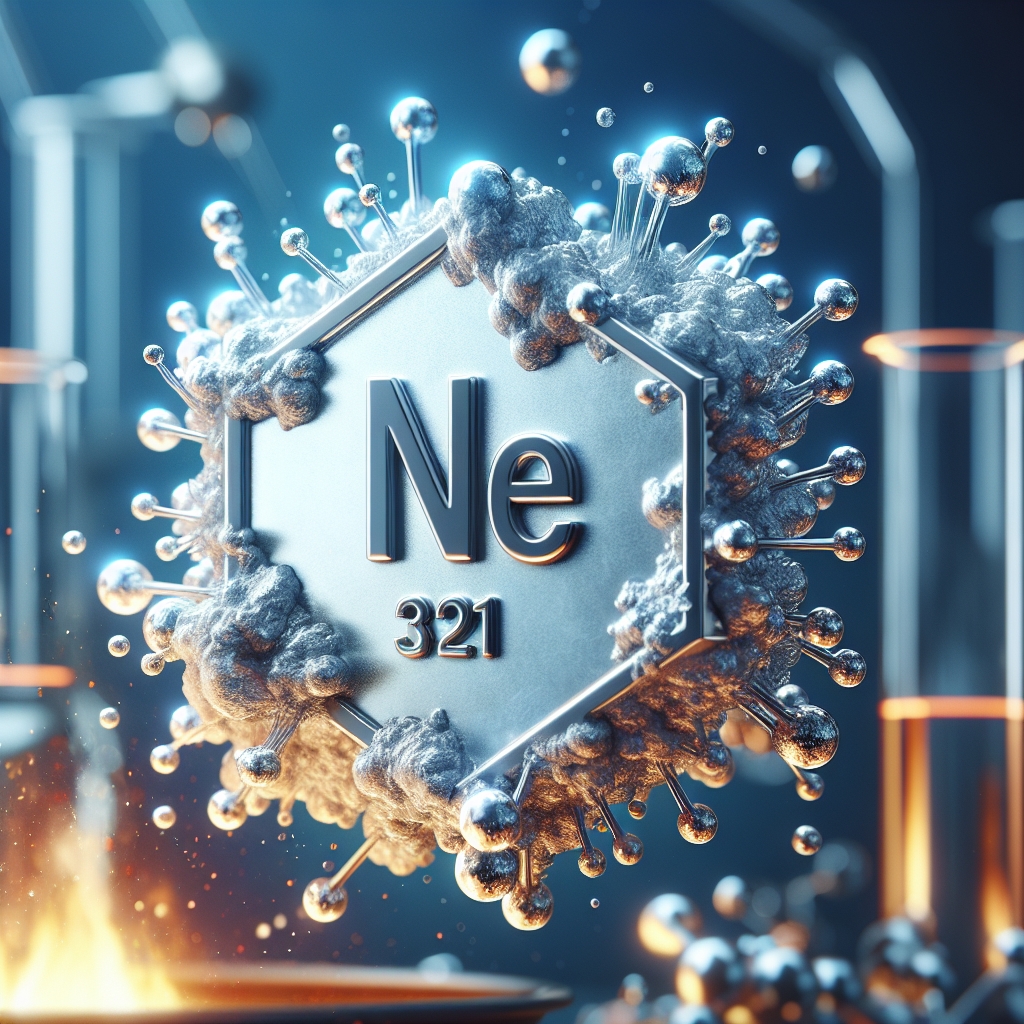Neodymium, a rare earth metal, has garnered significant attention in both scientific and industrial circles due to its unique properties and applications. This article delves into the reactivity of neodymium, exploring its chemical behavior, its role in various applications, and the safety considerations associated with its use. By understanding the reactivity of neodymium, we can better appreciate its value and the precautions necessary when handling this intriguing element.
Chapter 1: The Chemical Reactivity of Neodymium
Neodymium, with the symbol Nd and atomic number 60, is a member of the lanthanide series in the periodic table. It is known for its bright, silvery metallic appearance and is highly reactive in its pure form. The reactivity of neodymium is primarily due to its electron configuration, which makes it eager to donate electrons and form compounds, especially with nonmetals.
When exposed to air, neodymium reacts rapidly to form an oxide layer on its surface. This oxide layer can protect the underlying metal from further oxidation, but only to a certain extent. In the presence of oxygen, neodymium forms neodymium(III) oxide (Nd2O3), which is a common form of the element in nature. Additionally, neodymium reacts with water, albeit slowly, to form neodymium hydroxide (Nd(OH)3) and hydrogen gas, showcasing its reactivity with both oxygen and water.
Neodymium also forms alloys with a variety of metals, including iron and boron, to create materials with unique magnetic, electrical, and physical properties. The reactivity of neodymium plays a crucial role in the formation of these alloys, as it readily combines with other elements to enhance their characteristics.
Chapter 2: Applications of Neodymium
The reactivity of neodymium, while presenting challenges in terms of handling and storage, is also what makes it incredibly valuable in various applications. One of the most well-known uses of neodymium is in the creation of neodymium-iron-boron (NdFeB) magnets. These are among the strongest permanent magnets known, capable of lifting thousands of times their own weight. The unique properties of neodymium allow these magnets to perform exceptionally well in high-temperature environments, making them indispensable in industries such as renewable energy, automotive, and electronics.
Neodymium is also used in the manufacturing of glass, particularly for coloration and decolorization purposes. Its reactivity allows it to form compounds that can absorb specific wavelengths of light, leading to its use in creating special glasses that protect against laser beams or enhance the color of glassware and ceramics.
Furthermore, the reactivity of neodymium has been harnessed in the field of catalysis. Neodymium compounds serve as catalysts in various chemical reactions, including polymerization processes that produce synthetic rubbers and plastics. These applications underscore the importance of understanding and controlling the reactivity of neodymium to harness its full potential.
Chapter 3: Safety Considerations and Handling
Given its reactivity, handling neodymium requires careful consideration to ensure safety. When neodymium reacts with air, it can form dust or fine particles that are hazardous if inhaled. Therefore, working with neodymium, especially in powder form, necessitates the use of protective equipment such as gloves, goggles, and dust masks.
Additionally, the reaction of neodymium with water to release hydrogen gas poses a risk of explosion if not properly managed. It is crucial to store neodymium in airtight containers, away from moisture, to prevent accidental reactions. Special care should also be taken to avoid creating sparks or flames near neodymium, especially when it is in a finely divided form, due to the potential for explosive reactions with hydrogen gas.
Despite these challenges, the benefits of neodymium in various applications make it a valuable element. By understanding its reactivity and adhering to proper safety protocols, we can safely utilize neodymium to its fullest potential, benefiting from its unique properties while minimizing risks.
In conclusion, the reactivity of neodymium is a double-edged sword, presenting both challenges and opportunities. Through careful study and handling, we can harness the incredible properties of neodymium, pushing the boundaries of technology and innovation. As we continue to explore the capabilities of this fascinating element, it is clear that neodymium will play a crucial role in shaping the future of various industries.

